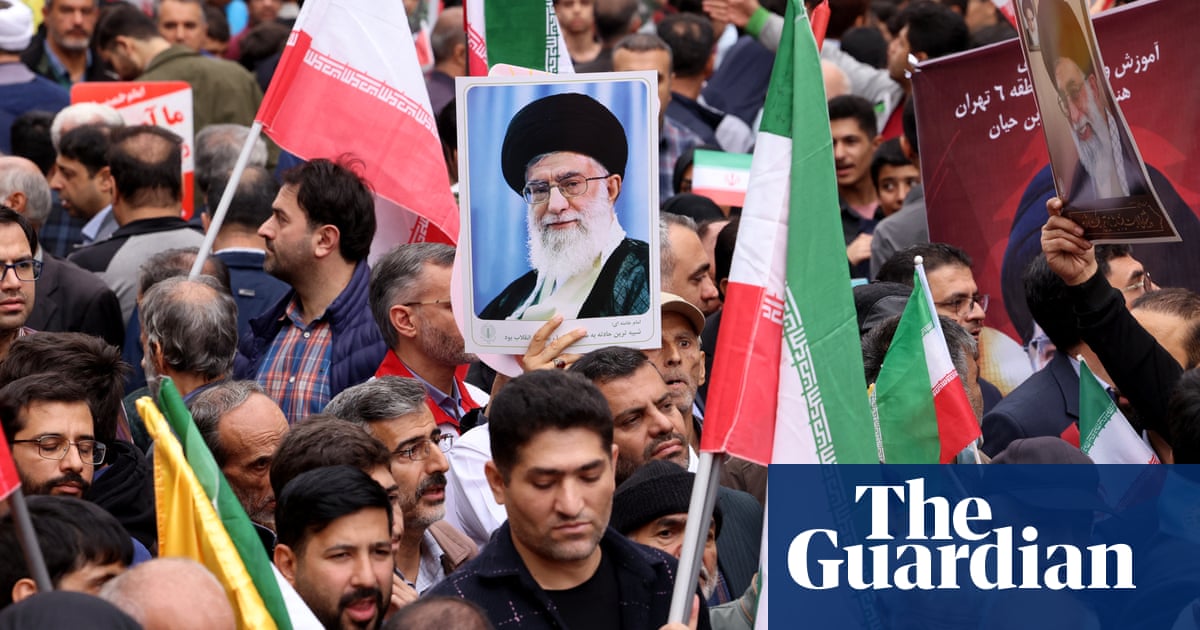World
US-Iranian journalist believed to have been detained in Iran

An Iranian-American journalist who once worked for a US government-funded broadcaster is believed to have been detained by Iran for months, authorities have said, further raising the stakes as Tehran threatens to retaliate over an Israeli attack on the country.
The imprisonment of Reza Valizadeh, which was acknowledged to the Associated Press by the US Department of State, came as Iran marked the 45th anniversary on Sunday of the US embassy takeover and hostage crisis. It also followed Iran’s supreme leader, Ayatollah Ali Khamenei, threatening both Israel and the US the day before with “a crushing response” as long-range B-52 bombers reached the Middle East in an attempt to deter Tehran.
Valizadeh had worked for Radio Farda, an outlet under Radio Free Europe/Radio Liberty overseen by the US Agency for Global Media. In February, he posted on X that his family members had been detained in an effort to make him return to Iran.
In August, Valizadeh apparently posted two messages suggesting he had returned to Iran despite Radio Farda being viewed by Iran’s theocracy as a hostile outlet.
“I arrived in Tehran on March 6, 2024. Before that, I had unfinished negotiations with the [Revolutionary Guards] intelligence department,” the message read in part. “Eventually I came back to my country after 13 years without any security guarantee, even a verbal one.”
Valizadeh added that the name of a man who he claimed belonged to Iran’s intelligence ministry. The AP could not verify whether the person worked for the ministry.
Rumours have been circulating for weeks that Valizadeh had been detained. The Human Rights Activists News Agency, which monitors cases in Iran, said he had been detained on arrivalin the country earlier this year, but was later released.
Valizadeh was then rearrested and sent to Evin prison, where he now faces a case in Iran’s revolutionary court, which routinely holds closed-door hearings in which secret evidence is routinely used against defendants, the agency reported. Valizadeh had faced arrest in 2007 as well, it said.
The US Department of State told AP that it was “aware of reports that this dual US-Iranian citizen has been arrested in Iran” when asked about Valizadeh.
“We are working with our Swiss partners who serve as the protecting power for the United States in Iran to gather more information about this case,” the department said. “Iran routinely imprisons US citizens and other countries’ citizens unjustly for political purposes. This practice is cruel and contrary to international law.”
Iran has not acknowledged detaining Valizadeh. Iran’s mission to the United Nations did not immediately respond to a request for comment.
The Voice of America, another US government-funded media outlet overseen by the Agency for Global Media, first reported the state department was acknowledging Valizadeh’s detention in Iran.
Since the 1979 US embassy crisis, in which dozens of hostages were released after 444 days in captivity, Iran has used prisoners with western ties as bargaining chips in negotiations with the world. In September 2023, five Americans detained for years in Iran were freed in exchange for five Iranians in US custody and for $6bn (£4.6bn) in frozen Iranian assets to be released by South Korea.
Valizadeh is the first American known to be detained by Iran in the time since.
Meanwhile, Iranian state television broadcast footage on Sunday of different cities across the country marking the anniversary of the embassy takeover.
Gen Hossein Salami, the head of the Revolutionary Guards, also spoke in Tehran, where he repeated a pledge made the day before by Khamenei. “The resistance front and Iran will equip itself with whatever necessary to confront and defeat the enemy,” he said, referring to the militant groups such as Hamas and Lebanon’s Hezbollah backed by Tehran.
In Tehran, thousands gathered at the gate of the former US embassy chanted “Death to America” and “Death to Israel”. Some burned flags of the US and Israel along with effigies of the Israeli prime minister, Benjamin Netanyahu.
They also carried images of killed leading figures of Iran’s allied militant groups including the Lebanese Hezbollah leader Hassan Nasrallah and the Palestinian Hamas leader Yahya Sinwar. The crowd in the state-organised rallies chanted they were ready to defend the Palestinians.









